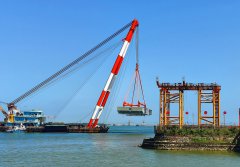EXPLAINER: Why bond yields may be warning of a recession
One of the more reliable warning signals for a recession is starting to shine
1 April 2022, 16:43
6 min read
Share to FacebookShare to TwitterEmail this articleNEW YORK -- One of the more reliable warning signals for an economic recession is shining brighter.
The “yield curve” is watched for clues to how the bond market is feeling about the U.S. economy’s long-term prospects. On Friday, a closely followed part of the yield curve lit up again after giving a brief signal earlier in the week.
WHAT IS THE YIELD CURVE?
At the center of the investing world are Treasurys, the IOUs the U.S. government gives to investors who lend it money. The yield curve is a chart showing how much in interest different Treasurys are paying.
On one end are shorter-term Treasurys, which get repaid in a few months or a couple years. On the other end of the chart are longer-term Treasurys, which take 10 years or decades to mature. Short-term yields closely follow expectations for what the Federal Reserve will do with overnight interest rates, while long-term yields move more on expectations for economic growth and inflation further in the future.
Usually, longer-term Treasurys offer higher yields than shorter-term ones, resulting in a chart with an upward sloping line. That’s in part because investors typically demand higher yields to lock away their money for longer, given the possibility of future rate increases by the Fed and the risk of inflation. But when investors are worried the economy will fall sharply, perhaps because the Fed is pushing short-term rates too high too aggressively, they’re willing to accept less for a Treasury maturing many years in the future.
When yields for short-term Treasurys are higher than yields for long-term ones, market watchers call it an “inverted yield curve.” And when that chart has a downward sloping line, Wall Street starts getting nervous.
WHY CARE?
All the talk about charts and yields is tough to digest, but an inversion in the yield curve is considered to be a reliable predictor of a recession.
Wall Street tends to watch the relationship between the two-year and 10-year Treasury yields for clues to whether the bond market is worried about an economic downturn, even though they have at times inverted without a recession following.
Others market observers, including officials at the Federal Reserve, view the relationship between the 3-month and 10-year Treasurys to be the more important one. Every recession in the past 60 years has been preceded by an inversion of the yield curve between the three-month and 10-year Treasurys.
There’s usually some lag between the two. One rule of thumb says it takes about a year after the three-month Treasury yield tops the 10-year yield before the onset of recession, according to the Federal Reserve Bank of Cleveland.
WHAT’S HAPPENING NOW?
At 0.52%, the three-month yield is still well below the 10-year yield of 2.38%, so no inversion there.
But on Friday, the two-year Treasury yield crossed well above the 10-year yield, at 2.43% versus 2.38%. It's a more convincing inversion than on Tuesday, when the two-year yield briefly peeked above the 10-year yield, for its first flip since the summer of 2019. Other, less-followed parts of the yield curve are also already inverted. Though they don’t have as good a record of success predicting recessions as the three-month yield versus the 10-year, they show the trend is swinging toward pessimism.
Following the 2019 inversion, it took less than a year before the global economy plunged into recession. At that time, though, the bond market did not see the pandemic coming. It was more worried about global trade tensions and slowing growth.
Now, the two-year yield is surging as investors ratchet up expectations for a more aggressive Fed. The central bank has already pulled its key overnight rate off its record low, the first increase since 2018, in hopes of beating down high inflation. It’s also preparing to hike rates several more times, and the Fed has indicated it may do so by double the usual amount at some meetings.
Another solid report on the U.S. jobs market Friday solidified expectations among many investors that the Fed will hike overnight rates by double the usual amount at its next meeting. That has helped the two-year yield more than triple in 2022 alone.
The 10-year yield has also risen, but not as quickly.
SO THE YIELD CURVE JUST REFLECTS THE BOND MARKET’S THINKING?
It could also have real effects on the economy. Banks, for example, make money by borrowing money at short-term rates and lending it out at longer-term rates. When that gap is wide, they make more in profit.
An inverted yield curve complicates that, though. If it causes banks to cut off lending — and thus growth opportunities for companies — it could help tighten the brakes on the economy.
IS IT A PERFECT PREDICTOR?
No, an inverted yield curve has sent false positives before. The three-month and 10-year yields inverted in late 1966, for example, and a recession didn’t hit until the end of 1969.








